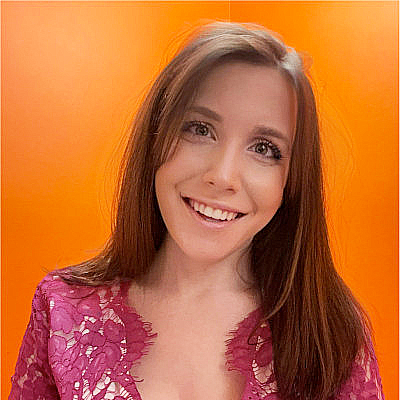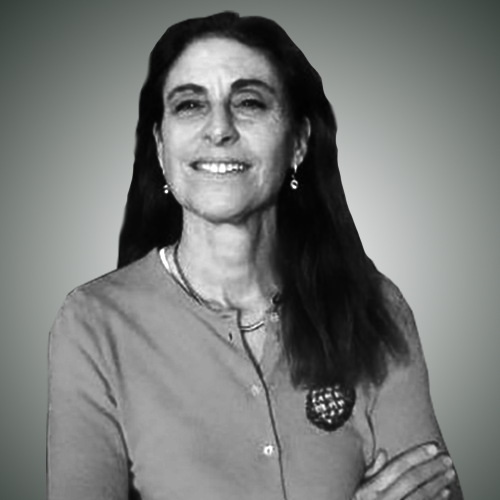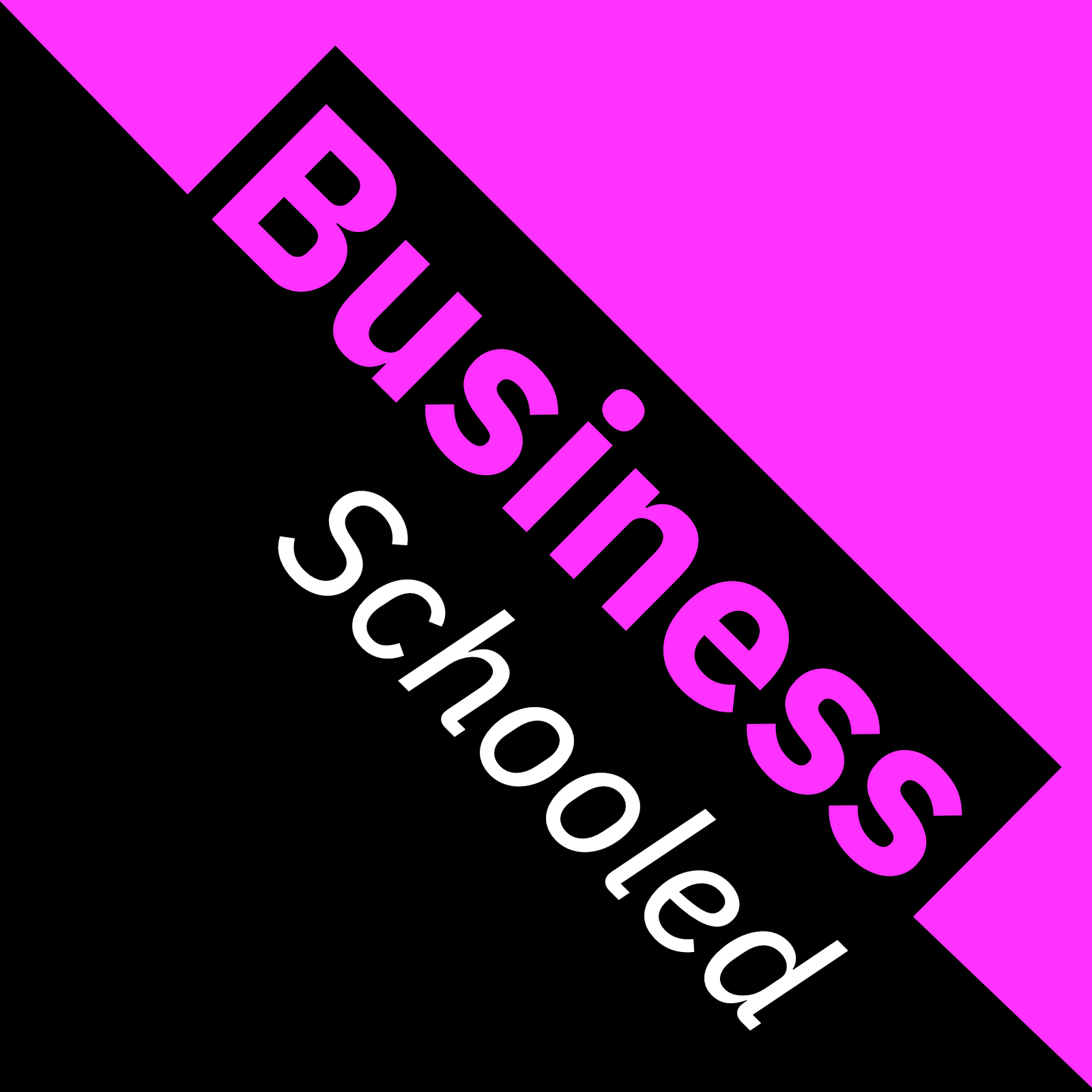Innovation and taking the right risks with NYU professor Michelle Greenwald
- 0.5
- 1
- 1.25
- 1.5
- 1.75
- 2
Speaker 1: Business Schooled.
Amanda Downie: Welcome to the Business Schooled Podcast where you'll learn how the world of business is being redefined. My name is Amanda Downie and I'm an Editorial Strategist at IBM. Today, I am beyond thrilled to be joined by Michelle Greenwald. Welcome, Michelle.
Michelle Greenwald: Thank you. I'm so happy to be here.
Amanda Downie: So please start by telling us a little bit about who you are, what you do, where you came from, whatever you'd like to share.
Michelle Greenwald: Okay. Well, I do a lot of different things, and if I had to narrow it down, I'd say I'm a cross- pollinator and an inspirer, but I'm a marketing professor, a consultant, a writer, and a former marketing executive. I worked in marketing at Disney, Pepsi, Nestle, Mattel, and the global ad agency, J. Walter Thompson. For years I've been helping companies create cultures of innovation, improve their innovation processes, and brainstorm new products and services in ways that are more thorough and systematic. I also do AI consulting, which is the type that I do at the intersection of trend forecasting and strategic planning. I've been writing for Forbes CMO Network for nine years about innovation, marketing strategy and technology, including a few articles about the cutting edge AI work that IBM is doing. Lastly, I'm a marketing geek and I've been teaching a wide variety of marketing courses at graduate business schools, including NYU Stern, Columbia, and IESE from Spain.
Amanda Downie: Wow. If your mind wasn't blown by inaudible everything she does, stay tuned. All right, so why the focus on innovation?
Michelle Greenwald: For my entire career, I've worked on new products in one way or another. In my early roles in consumer package goods marketing, I worked on brand line extensions, and then as the vice president and general manager at Pepsi of new products, I later transitioned from being a soda company to a total non- alcoholic beverage company. I helped us determine the most attractive market segments to enter from a strategic, operational and financial point of view. Then I was the senior vice president of the Disney toy line at Mattel where I oversaw the development of literally hundreds of toy products based on Disney films like The Lion King, Beauty and the Beast, Toy Story, Aladdin and The Little Mermaid. Then I moved over to Disney and was senior vice president of new business development identifying new businesses for the consumer products division to enter. Just so many things in my life have led me to innovation. In 2008, I taught at the Business School, IESE. Again, it's in Barcelona and Madrid, and the chairman of the marketing department had just written a Harvard case about Ferran Adrià, who's widely considered the most creative chef who ever lived. Which sounds kind of an overstatement, but if you look from the period when his restaurant was five times number one in the world, he's on the cover of New York Times, Wired, Esquire, you name it. He's gotten a tremendous amount of publicity and deservedly so. The Harvard case was about how his methods could be used by companies in virtually any sector to innovate more efficiently and creatively. That Harvard case, believe it or not, which I've been teaching ever since, changed my life. It inspired me to write my book, Catalyzing Innovation, which is the tool to inspire companies to think of more different ways to innovate. I looked at innovations all around the world, different countries where I had never seen things in a particular sector before, and I collected literally 1100 examples and organized them into 63 different patterns of innovation. Kind of random, but I looked at what was the key idea that made each of these ideas successfully, and could I group them in some way that was more manageable? So I did that and turned it into my book, and it's meant to be a tool for companies to use to stimulate their creativity and be inspired. Basically the last thing also that Ferran inspired me to do, which was a tremendous amount of fun, I started a program called Inventours. Because Ferran would close his restaurant for six months a year, giving his team time to innovate. Then they would go around the world visiting people in other sectors in other countries, and they got a lot of great ideas that they could bring back and cross- pollinate into the restaurant. So, I started a program called Inventours where I took C- suite execs to Helsinki, Estonia, Paris, Barcelona, Copenhagen, Singapore, New York, and we would meet with innovators in architecture, product design, food, technology, blockchain, quantum computing, you name it, just to kind of blow their minds and get them out of their sector and see how other really creative people were innovating. So, there's just been so many things that have been so exciting out there for me to take part in. Yeah, I think that's basically it. The only other thing is that I decided to morph the Inventours into something more local, more customized, and so I've been doing programs in the US, one- day programs with companies to help them focus on whatever they're interested in. It could be technology retail, omnichannel retail, scouting startups and business process improvements, things like that. So that's been the other aspect that just a more local, maybe more manageable, accessible version. Anyway, very sorry for such a long answer, but I've just become completely obsessed with innovation and I love it so much and I find it so fascinating.
Amanda Downie: Well, you and I are in the same boat there. I find it fascinating too, and I'm just blown away by this. First of all, thank you for the many Disney toys that currently reside in my house, so I'm sure you're responsible for some of those. Two, how can I get on those tours? Three, you say that as your teaching business, you have these cases that have inspired you, et cetera. So if you had to boil it down, what is innovation in the business context?
Michelle Greenwald: Okay, well, there are just so many ways to think about innovation. When people hear the term, they immediately think of new products and services, but there's so many other ways to innovate within companies. You can really innovate through every aspect of the value chain. You can also innovate in marketing many ways, but to better attract consumers, to better serve them, to add value at each stage of the customer journey. Then There's a lot of innovation in how companies can hire and organize for more diverse thinking. I think companies tend to do things that are very obvious and they don't think out of the box in terms of hiring and skillsets. Also, in creating physical and mental environments that inspire and support out of the box thinking. There's even a lot of innovation in operations and supply chain to make companies more efficient and cost-effective and improve customer experiences as a result of better end-to-end business processes. So really, again, innovation is not limited to products and services, there's so many things you can innovate within a company.
Amanda Downie: So you mentioned specific examples and started to touch on it, but how would you say you get to true innovation, to that out of the box thinking?
Michelle Greenwald: Well, first and foremost, the CEO needs to be obsessed with innovation and he or she needs to make it very obvious to the entire company. If you look at the most innovative people in business history, Steve Jobs, Jeff Bezos, Walt Disney, Larry Page, Ferran Adrià, and the most successful Chinese tech companies, their leaders have never been content with the status quo. They also had a pretty clear vision, which the entire organization understood. I find many times organizations are really not clear on the vision. Also, they create pressure to innovate constantly all aspects of their business. Walt Disney, no film could be the same as the one before. He was constantly coming up with new technology and breaking new ground. Ferran Adrià, the menu had to be entirely different every year. The last year when they were number one before he closed, they had 43 dishes, and each one of those had to be new food concepts. So if you look at Apple today, Apple has to constantly innovate to convince people that they need a new iPhone or a new computer. They have to have better features to make people feel that they really need to trade in their older model. So that's pressure, it's constant pressure to innovate. Then also employees need encouragement to share wild and crazy ideas in an environment where it's okay to fail and to learn from failures. One of the things Google does, which I think is really impressive, people that work on teams, they're encouraged to kill ideas if they're really not great, but if they work on them and they don't work out, they promote those people or they give them visibly good jobs so that they're not embarrassed to be associated with a failure. So, there's certain things that you can do to signal to the organization that it's okay to fail, but at the same time, there needs to be business criteria to winnow down ideas that fit with the organization's strategic vision. You need criteria, because you can't have irresponsible, frivolous risk-taking, there need to be some parameters. If you can have those parameters and criteria, then I think people feel safer in innovating, because they're not going to really fall maybe as far down as they otherwise might. So, I call it prudent risk- taking.
Amanda Downie: I love that. Then-
Michelle Greenwald: I'm sorry, just one more area, which is cross- pollination of ideas, again, because you asked about how you get true innovation, and maybe I'm repeating about the program that I started, but cross- pollinating ideas across sectors and countries, and there's so many fantastic examples. One of my favorite examples was Phil Knight's partner, Bill Bowerman, when Nike was founded, got inspiration from his wife. His wife was making waffles one morning in the kitchen and he looked at the waffle iron and thought, " Well, this would be an interesting pattern of crisscrossing for the bottom of the shoe," and he created the waffle trainer sneaker. Apple, when they had the iMac computer with the glossy exterior, they went to a jellybean factory, because they wanted to see an analogy. There's a German manufacturing company called Festo, and their engineers go to the zoo and they get inspiration from biomimicry from animals. They created equipment based on the muscles in an elephant's trunk. So the point is, if you really want to innovate, you need stimuli and you need to get out of your country and out of your sector. So, I'm just a very big believer in that. Then there are also some really great techniques for brainstorming that can maximize what I call relevant creativity, not just creativity for creativity's sake. That's it, that's it.
Amanda Downie: No, that is so great and it's a wonderful point that you make. It's not innovation for innovation's sake, creativity for creativity's sake, it is prudent risk- taking. I love that phrase that you said, and having parameters, this clarity of vision, but also the permission to fail.
Michelle Greenwald: Thank you.
Amanda Downie: So-
Michelle Greenwald: Actually, you just made me think of one more thing, and that is cross- functional teams, that they're critical. A lot of organizations are siloed, we hear about that a lot. But if you can get cross- functional teams to work together at the very start, because everybody can contribute to the ideas and issues are identified earlier, so you're more likely to have a problem- free execution, it improves time to market and product quality. So that's one other component I think is super, super important, that every critical function is valued and that they work together early on.
Amanda Downie: So, I love what you're saying about prudent risk- taking as well and how you want these cross- functional teams. Going down to the individual level, how can someone become more innovative or creative?
Michelle Greenwald: So at the risk of being self- serving, I would say my book is really, really fun. It's a really fun, quick and easy way to become more innovative, because it makes readers aware of how many different ways there are to innovate. I've found that when companies don't have stimuli, they tend to come up with the same ideas over and over again. There are so many ways. So, just examples of chapters in my book. I talked about 63 ways of innovating, but there's color innovation, shape, price, size, business model, biomimicry, technology, materials, packaging, reversing things. There are so many different ways, but unless you have a checklist, and this is what I was inspired by Ferran, unless you have a checklist, he looked at deconstruction, he looked at evoking the sixth sense, he looked at bringing new equipment into restaurants that have never been before. But not everybody would think of all these things, it's just impossible, but if you have stimuli that gives you a very comprehensive list and you see how companies have done it in very different sectors, but yet the same thing, it can inspire you to be creative. Another thing that people can do, and this is very easy, is start taking photos or screenshots of anything you discover that you haven't seen in that sector before that you thought was clever or innovative enough to share with others. When I do the one- day programs I mentioned in New York and Chicago, I send the teams out looking at retail for several hours. They have to take pictures and come back, and of everything they saw, they have to say what would they share on Instagram? What is such a wow that really impressed you enough that it would break down your entire filters of everything that you saw that you would want to share? So, that's a really, really good criteria. That's something that's breaking through the clutter and really having an impact. Once you have all these examples, start collecting them and give each type of innovation a name to categorize it. I had my 63, but you can come up with whatever you want, whatever's relevant to you or your company. Then save your examples by category with a hashtag in iPhoto albums, PowerPoint slides, Microsoft lists or some other tool. Then make it a practice every day to just think about... literally I do this every single day. Wherever I'm walking, I see things that are new that I've never seen before and I take pictures and I categorize it. Then you can organize it and tap into it when you're doing that type of innovation brainstorming. It's really, really fun and it will rewire your brain, and it's actually a really fun way and positive way to view the world.
Amanda Downie: I would agree. That sounds like a joyful dream- like way to walk around the world, that's great. So can you talk more about,'cause I've heard both the word innovation and creativity, can you talk about the link between them and how these apply to areas we may not think of like tech innovation?
Michelle Greenwald: So, I think innovation and creativity are used interchangeably. I don't think that's a terrible thing, but I can define it more precisely. Basically creativity and innovation can be viewed as a four- step process. So, step one is identifying the problem or need. If you make a BC presentation, the first thing they want to know is what is the problem that you're addressing? What is the pain point? The second one is ideating solutions, so that's the brainstorming part. Creativity is coming up with a fully developed product or service, in effect, creating something that's real or tangible, but becomes an innovation when it's fully developed and put into the market and it succeeds. So often organizations innovate just to be novel and different, but if it's not useful or successful, it's not really an innovation.
Amanda Downie: That's great. So, what do you need to be strategically successfully innovative?
Michelle Greenwald: Okay, that's a great question and it's an area where I see a lot of companies falling down. So most companies from what I have seen, and surprisingly big companies that you would think maybe don't do this, but they don't seek solutions as methodically as they should. They don't systematically and strategically prioritize where they should focus their innovation efforts among all their options. Companies can't do everything, so they need to make choices, so sustainability is a great example. Every firm needs to be significantly more sustainable quickly, because climate change is such a monumental crisis. Sustainability is massive. I realized this when I put together the two- day program on sustainability innovation. The UN has 17 sustainability goals to be achieved by 2030, and if you look at it, it's amazing the range of goals. So, it ranges from climate action to gender equality, to life below water. It's really very, very broad, and companies can't do justice to all of them, so they have to decide which makes sense for their business. Then they have to investigate every stage of the value chain for opportunities. I mentioned those from raw materials to product and service design, manufacturing, transportation, et cetera, and then they should really quantify the potential impacts using different metrics. CO2 emissions is a common one, but there are other ways, financial impact, number of people affected. There are other metrics. So to be strategic, you need to also see what are the big areas that you really want to tackle first. Then this is where I see companies falling down a lot is that they don't establish criteria for which initiatives to get behind. Again, they could be impact on the planet, CO2 emissions, how immediately it can be implemented, profit impact, relation to long- term strategic vision or impact on the corporate brand image. But if you can develop the criteria, that's a big step, but then you need to go further and weight the criteria as to which are most important for your company. So once you have the different initiatives, and you can't do this for every initiative, but the ones that seem like the biggest, you apply the criteria and the weights and then you can do the math, and you can see which ones are most important to the organization and are going to have the biggest impact, however you define impact. Then also there needs to be a customer reason for the innovation and innovators have to understand how the product or service will be used. So if you asked about tech or for a company like IBM, if for example, it's a new type of data or method to analyze data, who will be accessing and using it? It's very important to have a really good understanding of the target persona. Then what types of decisions will your tool be used for and how does the data or method enable the end user to make better decisions? Lastly, how are they currently addressing the need and how is the new offering truly better? So, you really need to answer these questions so you don't come up with a product or service that really isn't needed. I think a lot of companies, they think they have the technology to do something, but they don't really figure out how big of an improvement is versus what's out there.
Amanda Downie: That is incredibly insightful. Since you sort of landed on tech, I'd love to dig in a little bit deeper, especially to AI technology. Because you've spent so much time looking at that, what do you think about this current relationship between tech and innovation and creativity, especially when you think about these newer developments like ChatGPT and DALL- E?
Michelle Greenwald: It's interesting. As a professor, when I first found out about ChatGPT, I was quite honestly very nervous, and I still think there are quite a bit of few issues around that. But if you think about just from a creativity standpoint, and I've been interviewing some very interesting tech people about this who have really great insights that I'd like to share, but ChatGPT can provide stimuli for creativity. I've talked a lot about the importance of stimuli, but just as an example, innovators can summon all types of examples in the area that they want to innovate in to see what's already out there. Many, many times people think of ideas, and then one of the things I always do when I work with startups or students who are working on new product ideas is have them search what's out there, because very often there's a lot of similar ideas. So ChatGPT can help you see what's already out there or in adjacent categories, and then it can bring in stimuli that will help your creative juices to flow. An example that I love is Thomas Edison. When he invented the light bulb, I was blown away by this, but he experimented with an estimated 6, 000 different filament materials. If ChatGPT had been around when he was inventing, it could have helped him come up with ideas for filament materials to try, and it also could have narrowed them down so he didn't have to try as many based on certain properties. So, these queries can really save time and resources and they can be stimuli, et cetera. Also, these AI tools can enable innovators to have more hypotheses that they can test faster so they can consider a broader range of options, so I think that expands the potential for creativity. I spoke with a quantum computer software coder this week who said he can use ChatGPT to do some of the more mundane coding functions, so that he can be freed up to do more thinking and innovating. He used a really interesting analogy. He said he thought of ChatGPT as an intern or a helper. Then I talked with a woman named Sylvia inaudible, who is a graduate student in Barcelona, and she's hoping to design Web3 apps. She said that there's a lot of creativity in phrasing and structuring ChatGPT questions to get answers that will enhance innovation thinking. So if you're really good at knowing how to ask for things, that's a competitive advantage and the output that you get is a competitive advantage. Then lastly, with some of the AI message resonance work that IBM is doing that I've written about, there are different ways to describe innovations. To me, how you describe your product or service to your target audience is a really, really critical success factor in new products and services. IBM's been doing some amazing work on message resonance and really figuring out how to optimize marketing messages. That includes verbal, it includes some music, it includes sequence, visuals, all these different elements that can be optimized for literally each potential customer profile. So, I think all of this can help creativity and make it more on target.
Amanda Downie: I mean, well, first of all, these things sound like people should be using them, at least as you say, as stimuli, but for those who are not as comfortable or scared of technology, and I know several of these, do you have any advice about how they can get into using this technology even if they don't have a strong tech background or feel tech native?
Michelle Greenwald: Absolutely. I frankly never thought of myself as a tech person, and now I find I'm most interested in writing about technology. I find it really exciting and really interesting. Again, 20 years ago if you told me this, I would never believe that I would be doing this. But I think number one, start by reading articles about new technologies like AI, blockchain, the metaverse, ChatGPT, quantum computing, whatever, just start. Because once you get started, then you're sort of sensitized to certain concepts, and every time you have another exposure, you learn more and more and it's easier for you to absorb. Right now, I'm reading a lot about quantum computing and I find that every time I talk to someone or read another article, it's all building. Basically technology is giving all of us tools to do things we never could have imagined previously. Now it's easier than ever to create a website, make a video, see what our homes would look like with different furniture, floors or paint. So just get in there, start experimenting and don't be afraid. You don't have to perfect, but just try. Just get out there and start trying.
Amanda Downie: Thank you so much. I know I've learned so much just in this short bit of time and I'm sure that people listening have as well. Where can people go to find out more about you and to continue following you and your thought leadership?
Michelle Greenwald: Oh, thank you very much for asking that. So, there are three places. One is my website, which is www. catalyzinginnovation. com. You can follow me on Forbes CMO Network where I've written over 100 articles, and lastly, you can find me on LinkedIn.
Amanda Downie: All right, so before we sign off, what is the one thing you hope listeners take away from this episode?
Michelle Greenwald: For innovation, I think it's really important that companies hire for diverse thinking and are creative in searching for analogous skill sets in candidates from outside the industry.
Amanda Downie: Thank you so much, Michelle, for joining us here today. It has been an absolute pleasure.
Michelle Greenwald: Thank you.
Amanda Downie: This has been the Business Schooled Podcast where we discuss emerging trends and topics in modern business. Thanks for listening.
DESCRIPTION
In this episode, corporate innovation expert and NYU professor Michelle Greenwald explains how unexpected tactics can lead to fresh innovation and how to take risks that will deliver business value. The author of Catalyzing Innovation and a popular Forbes column talks about how to take risks that are anchored to business value and customer needs. Learn about the steps to innovation that fuels major brands like Disney, Apple and IBM.
Your host: Amanda Downie, Editorial Content Strategist, IBM
Key takeaways:
What innovation means in the business context
How to foster a more creative and innovative culture
What tools like Chat GPT mean for creativity
Connect with Michelle Greenwald on LinkedIn
Catalyzing Innovation: the book and resources
Today's Host

Cristina McComic

Sam Smitte

Amanda Downie

Daryl Pereira
Today's Guests


